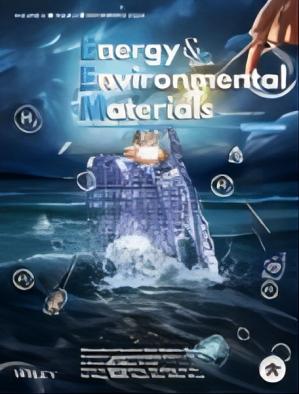无阳极设计与球团铝电流收集器使高能量密度钠全固态电池
IF 14.1
2区 材料科学
Q1 MATERIALS SCIENCE, MULTIDISCIPLINARY
引用次数: 0
摘要
介绍了一种采用电化学稳定的硼氢化钠固体电解质和颗粒状铝集流器的钠全固态电池无阳极电池的设计。首先,简要回顾了利用固态电解质实现无阳极配置的可行策略。然后,阐述了孟等人在设计无阳极钠全固态电池方面的杰出工作。最后,讨论了b孟工作的意义。本文章由计算机程序翻译,如有差异,请以英文原文为准。

Anode-Free Design with Pelletized Aluminium Current Collector Enables High-Energy-Density Sodium All-Solid-State Batteries
A commentary on an anode-free cell design with electrochemically stable sodium borohydride solid electrolyte and pelletized aluminium current collector for sodium all-solid-state batteries is presented. First, the viable strategies for implementing anode-free configuration utilizing solid-state electrolytes are briefly reviewed. Then, the remarkable work of Meng et al. on designing an anode-free sodium all-solid-state battery is elucidated. Finally, the significance of Meng's work is discussed.
求助全文
通过发布文献求助,成功后即可免费获取论文全文。
去求助
来源期刊

Energy & Environmental Materials
MATERIALS SCIENCE, MULTIDISCIPLINARY-
CiteScore
17.60
自引率
6.00%
发文量
66
期刊介绍:
Energy & Environmental Materials (EEM) is an international journal published by Zhengzhou University in collaboration with John Wiley & Sons, Inc. The journal aims to publish high quality research related to materials for energy harvesting, conversion, storage, and transport, as well as for creating a cleaner environment. EEM welcomes research work of significant general interest that has a high impact on society-relevant technological advances. The scope of the journal is intentionally broad, recognizing the complexity of issues and challenges related to energy and environmental materials. Therefore, interdisciplinary work across basic science and engineering disciplines is particularly encouraged. The areas covered by the journal include, but are not limited to, materials and composites for photovoltaics and photoelectrochemistry, bioprocessing, batteries, fuel cells, supercapacitors, clean air, and devices with multifunctionality. The readership of the journal includes chemical, physical, biological, materials, and environmental scientists and engineers from academia, industry, and policy-making.
 求助内容:
求助内容: 应助结果提醒方式:
应助结果提醒方式:


